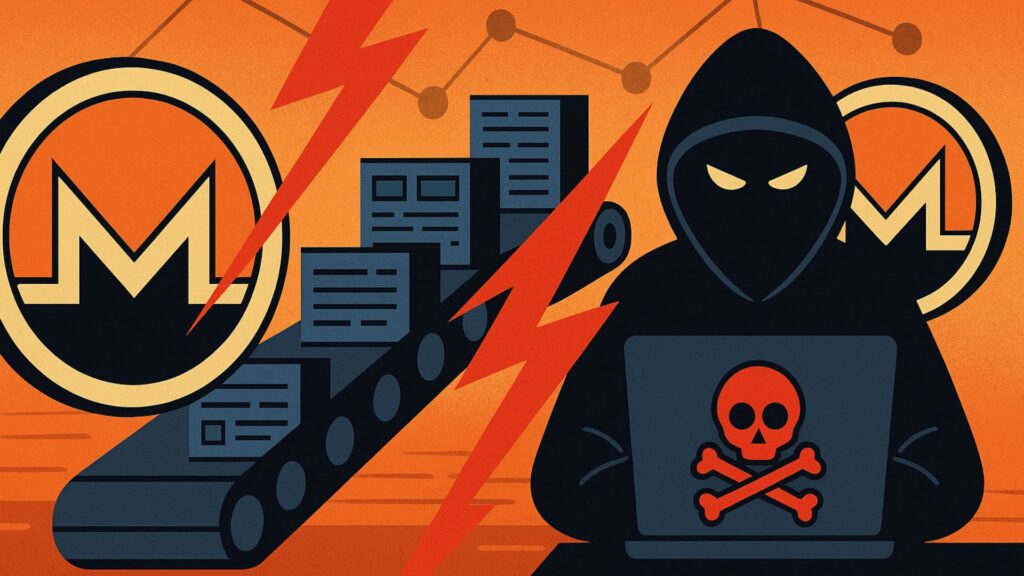Monero, the cryptocurrency long championed for its privacy features, is facing one of its toughest tests. On September 14, the network experienced its largest blockchain reorganisation to date, an 18-block incident that erased more than 100 transactions.
For many, this has reignited old concerns about the fragility of the chain and its exposure to mining dominance.
While Monero has weathered technical challenges before, this reorg has raised deeper questions: can users still trust the network’s stability, and could such incidents open the door to double-spending? The answers will shape Monero’s future credibility.
The 18-Block Reorganisation and Its Impact
At the heart of the latest disruption is an unusually deep 18-block reorganisation, the largest in Monero’s history. In practical terms, this means the chain effectively rewrote more than half an hour of confirmed transactions.
A reorg occurs when competing chains exist temporarily, and the network eventually chooses one version as canonical.
The discarded chain, along with its transactions, becomes invalid. Normally, these events span only one or two blocks and happen naturally in proof-of-work systems. What makes this case alarming is its depth and the potential intent behind it.
Independent analysts confirmed that 118 confirmed transactions were erased. For everyday users, this undermines a basic expectation: that once a transaction is confirmed, it remains immutable. The event has also shone a spotlight on Qubic, a project with controversial ties to Monero mining.
Data shows Qubic controls around 2.11 GH/s of Monero’s 6.00 GH/s total hashrate, making it the single largest participant.
Such dominance fuels fears of manipulation, and the cryptic statement from Qubic’s founder, Sergey Ivancheglo, only stoked speculation: “Monero will stay because Qubic wanted it to stay.”
The reorg has also highlighted the inefficiencies of current mining dynamics. Reports suggest Qubic’s strategy, including selfish mining, has led to a 43% orphan rate in recent blocks. This indicates not just power, but also a willingness to disrupt for demonstration rather than profit.
Monero developers are testing fixes such as DNS checkpointing, which would centralise certain aspects of block validation to prevent extended reorgs. However, critics argue that such solutions compromise the network’s decentralisation ethos.
Beyond the technicalities, the reputational damage is real. Monero has always prided itself on resilience against surveillance and attacks.
Yet repeated incidents like this raise the question of whether the network can maintain confidence when large mining entities appear able to sway consensus at will.
For long-term holders, developers, and exchanges alike, this episode is a stark reminder of how fragile stability can be when power is concentrated.
The Growing Threat of Double-Spending
While the reorganisation alone is worrying, its most troubling implication is the increased feasibility of double-spending attacks.
A double-spend occurs when a user sends coins in one transaction, only for that transaction to be invalidated by a reorg, allowing the same coins to be spent elsewhere.
With Monero blocks produced roughly every two minutes, an 18-block reorg represents over 30 minutes of overwritten history.
For merchants, exchanges, and service providers, this calls into question the long-standing practice of waiting for 10 confirmations before treating a transaction as final.
Security researchers, including those from SlowMist, have warned that this event changes the calculus. The traditional safety margin of 10 confirmations may no longer protect against malicious reorganisations.
Instead, businesses interacting with Monero may now need to wait for significantly more confirmations, creating delays and reducing its practicality as a payment system.
The scale of the threat is underscored by history. In August 2025, Qubic was already accused of attempting to dominate Monero’s hash power, prompting exchanges like Kraken to suspend deposits temporarily.
That precaution now looks prescient. This time, competing chains from large pools such as monero.hashvault.pro and supportxmr.com were visible, with smaller pools seeing their blocks consistently discarded. This concentration not only centralises power but also heightens the risk of coordinated reorganisations.
The danger lies not only in direct theft but in eroding confidence. If merchants fear that even a confirmed Monero payment can later vanish, they may stop accepting it.
Exchanges may raise confirmation thresholds, frustrating traders. Everyday users could lose faith in the coin’s reliability, undermining its central value proposition. While no confirmed double-spend has yet been reported from this incident, the ability is now demonstrably possible.
In response, developers and analysts alike stress that stronger safeguards are needed. Proposals include deeper checkpointing, rethinking block validation rules, or even diversifying mining participation to reduce concentration.
Yet each option comes with trade-offs between decentralisation, usability, and security. The pressing challenge for Monero is to reassure its community before these fears harden into lasting distrust.
Conclusion
The 18-block reorganisation has forced Monero into a reckoning. What was once seen as a secure and private digital currency now faces pressing doubts about its stability and vulnerability to double-spending.
While fixes like DNS checkpointing are in development, they raise their own philosophical debates about centralisation.
For now, Monero stands at a crossroads: either restore confidence through meaningful reforms or risk losing the trust that has sustained it. The outcome will determine whether Monero’s privacy promise remains viable in the long run.

